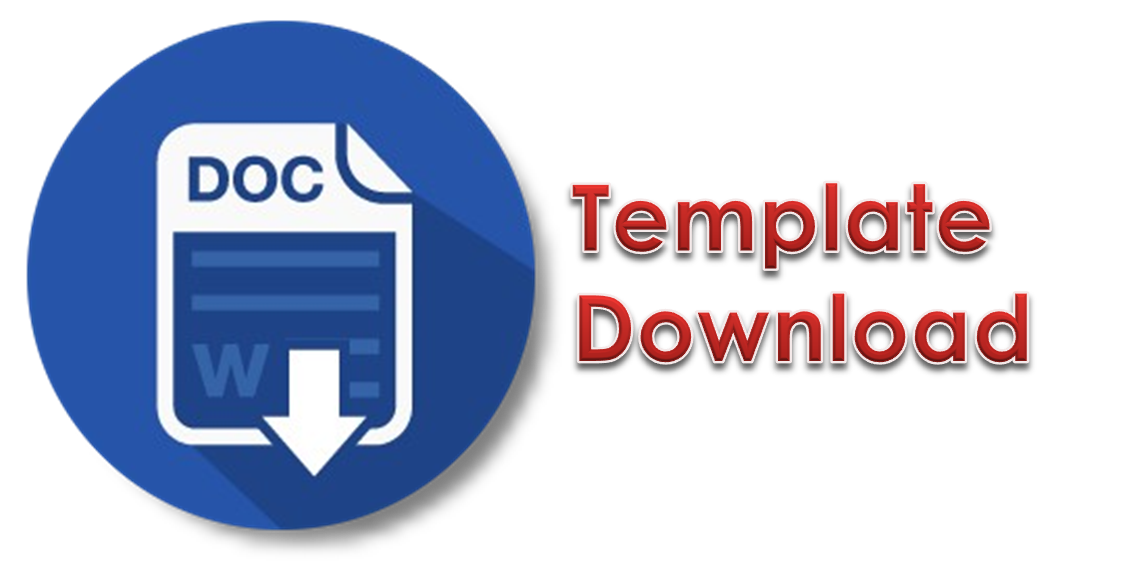APPLICATION OF UTAUT THEORY (UNIFIED THEORY OF ACCEPTANCE AND USE OF TECHNOLOGY) TO KNOW THE USE BEHAVIOR OF UPN SCIENCE E-LEARNING USERS WITH BEHAVIORAL INTENTION AS INTERVENING VARIABLES
Abstract
This study aims to determine: (1) the effect of Performance Expectancy, Effort Expectancy, Social Influence, Perceived Ease of Use, Perceived Usefulness on the Behavioral Intention of UPN Science e-learning users; (2) Effect of Faciliating Condition and Behavioral Intention on Use Behavior of UPN Science e-learning users. The population in this study were UPN Veterans East Java students who used e-learning in UPN Science. In this study using a sample of 266 respondents. The sampling technique in this study is the purposive sampling technique with the criteria of UPN Veterans East Java students using UPN Science in their learning process. The data analysis technique uses Partial Least Square using smartPLS 3.0 software.
The results of this study indicate that Performance Expectancy, Effort Expectancy, Social Influence, Perceived Ease of Use, Perceived Usefulness have a positive and significant influence on Behavioral Intention. Likewise, Faciliating Condition and Behavioral Intention have a positive and significant influence on Use BehaviorKeywords
Full Text:
PDFReferences
Abdillah, W. (2015). Partial Least Square (PLS): Alternative Structural Equation Model (SEM) in Business Research. in
W. Abdillah, Partial Least Square (PLS): Alternative Structural Equation Model (SEM) in Business Research (p. 194).Yogyakarta: ANDI.
Ajzen. (1991). The Theory of Planned Behavior, Organizational Behavior and HumanDecision Processes.
Benbasat, GC (1991). Development of an Instrument to Measure the Perceptions of Adopting an Information Technology Innovation. Information Systems Research.
Clark, VL (2015). Understanding Research : A Consumer's Guide (Second Edition). Pearson Education
Efendi, N.a. (2008). Education In Nursing. Jakarta: Salemba Medika.
Gaol, JL 2008. Management Information Systems.Jakarta: Grasindo. Gartika Rahmasari and Rita Rismiati. 2013. e-learning Learning
long distance in high school. Bandung: Yrama Widya Publisher
Gavrilova, ML (2006). Computational Science and its Application. Glasgow: Springer.
Hardani, H., Medica, P., Husada, F., Andriani, H., Sukmana, DJ, & Mada,
UG 2020. Book of Qualitative & Quantitative Research Methods (Print 1, April Issue).Yogyakarta : CV. Group Science Library.
Hermawan, AY (2017). Business Research Quantitative Approach. Jakarta: Kencana. Jogiyanto. (2007). Behavioral Information System. Yogyakarta: Andi Offset.
Pranoto, A. (2009). Science and Technology. Jakarta: PT Gramedia Pustaka Utama.
Priyono. (2016).Method Study Quantitative. Sidoarjo: ZifatamaPublishing.
R. L Thompson, CA (1991). Personal Computing: Toward a Coceptual Model of Utilization. MIS Quarterly.
Rogers. (1995). Diffusion of Innovations, 4th Edition. New York: The Free Press.
Rosenberg, MJ (2001). E-Learning: Strategies for Delivering Knowledge in DigitalAge. New York: McGraw Hill.
Rusman. (2008). Curriculum Management. Bandung: Indonesian University of Education.
Sani, Ahmad. Empress, Vivi. 2013. Human Resource Management Research Methodology: Theory, Questionnaires, and Data Analysis. Malang : UIN Press
Siyoto, S. d. (2015). Basic Research Methodology (Print 1).
Yogyakarta: Media Publishing Literacy.
Sugiyono. (2013). Method Study Business (Quantitative, Qualitative,and R&D).
Bandung: Alphabeta.
Sugiyono. (2018). Quantitative Research Methods. Bandung: Alphabeta.
Surjono, HD (2010). Building a Moodle-Based E-Learning Course. Yogyakarta:UNY Press.
Tjokro, SL (2009). Terrifying Presentation. Jakarta: Elex Media Komputindo.
Triandis, H. (1980). Values, Attitudes and Interpersonal Behavior.
Lincoln: University of Nebraska Press.
Venkatesh, ea (2003). User Acceptance of Information Technology: Toward a Unified View. Minnesota: Management Information Systems Research Center.
Wahono, R., 2005, Introduction to E-learning and its Development.
Sainscomputer.com(IKC) pages 1-10
Affandy, AR (2013). Factors Affecting Interest in Utilization
Regional Financial Management Information System (SIPKD) (Case Study in Blitar City Government)). Journal of Universitas Brawijaya, 7-12.
Adijaya, N. (2018). Student Perception in Online Learning*
*Theory development from study title "perceptionstudents towards teaching materials in online learning” which
has been published in the Journal of Eduscience Vol. 3/1. Wanastra: Journal of Language and Literature, 10(2), 105–110.https://doi.org/10.31294/w.v10i2.3931
Amirul Mukminin, RR and HW (2019). Application of the Link Model for “Paylater” User Behavior in Traveloka. Journal of Computech & Business, 13(2), 81–90.
Ariska, M., Wulandari, DAR, & Ar Ruhimat, QA (2019). Evaluation of End-User Acceptance of the University Customer Care Center (UC3) Application at the University of Jember by Using the Unified Theory of Acceptance and Use of Technology (UTAUT) Approach. INFORMAL: Informatics Journal, 4(2), 68. https://doi.org/10.19184/isj.v4i2.13962
Arami, M., Koller, M., & Krimmer, R. (2004). User acceptance of multifunctional smart cards. Ecis, 2004, 80-88 ST-User acceptance of multifunctional sma.20040008.pdf
Ariska, M., Wulandari, DAR, & Ar Ruhimat, QA (2019). Evaluation of End-User Acceptance of the University Customer Care Center (UC3) Application at the University of Jember by Using the Unified Theory of Acceptance and Use of Technology (UTAUT) Approach. INFORMAL: Informatics Journal, 4(2), 68. https://doi.org/10.19184/isj.v4i2.13962
Dwita, M. (2018). The Effect of the Application of the Link Model on the Behavior of E-Learning System Users at Amik Logic. 9986(September).
Hartanto, W. (2016). Use of E-Learning as a Learning Media. Journal of Economic Education, 10(1), 1–18.
Jamaluddin, D., Ratnasih, T., Gunawan, H., & Paujiah, E. (2020). Online Learning During the Covid-19 Pandemic For Prospective Teachers: Barriers, Solutions and Projections. Scientific Writing of UIN Sunan Mountain Djati Bandung, 1–10. http://digilib.uinsgd.ac.id/30518/
Khoirunnisak, W. (2016). Implementation of the Unified Theory Of Acceptance And User Of Technology (UTAUT) Acceptance Model
To Analyze Lecturer Acceptance Factors Against the Use of E-Learning Share-ITS. Thesis, 200–202.
Maatuk, AM, Elberkawi, EK, Aljawarneh, S., Rashaideh, H., & Alharbi, H. (2021). The COVID-19 pandemic and E-learning: challenges and opportunities from the perspective of students and instructors. Journal of Computing in Higher Education, 0123456789. https://doi.org/10.1007/s12528-021-09274-2
Muliadi, ML, & Japarianto, E. (2021). Analysis of the Effect of Perceived Ease of Use on Behavior Intention through Perceived Usefulness as an Intervening Media on Digital Payment Ovo. Journal of Marketing Management, 15(1), 20–27. https://doi.org/10.9744/pasaran.15.1.20-27
Ndubisi. (2006). Factors of Online Learning Adoption: A Comparative Juxtadoption of The Theory of Planned Behavior and The Technology Acceptance Model. International Journal on E-Learning, 571-591.
Yu, GM (2004). An Enhanced Technology Acceptance Model for Web-based Learning. Journal of Information Systems Education, 365-374.
Sari, F., & Purnamasari, S. (2013). Intensity of User Behavior of E-Learning System With Link Model. Matrices Scientific Journal, 12, 209–220
DOI: http://dx.doi.org/10.26737/jtmb.v8i2.3236
Refbacks
- There are currently no refbacks.
Published by:
Institute for Managing and Publishing of Scientific Journals STKIP Singkawang
JTMB (Jurnal Terapan Manajemen dan Bisnis)
e-ISSN : 2477-5282
p-ISSN : 2599-3127
Sekolah Tinggi Keguruan dan Ilmu Pendidikan (STKIP) Singkawang
Address : STKIP Singkawang, Jalan STKIP - Kelurahan Naram Singkawang, Kalimantan Barat, INDONESIA, 79251
No. Telp. : +62562 420 0344
No. Fax. : +62562 420 0584

Editor in Chief: [email protected] / [email protected] / Wa: +6282142072788
Support Contact: [email protected] / Wa: +6282142072788
Plagiarism Tools
Jurnal Terapan Manajemen dan Bisnis is licensed under a Creative Commons Attribution-NonCommercial 4.0 International License.





















